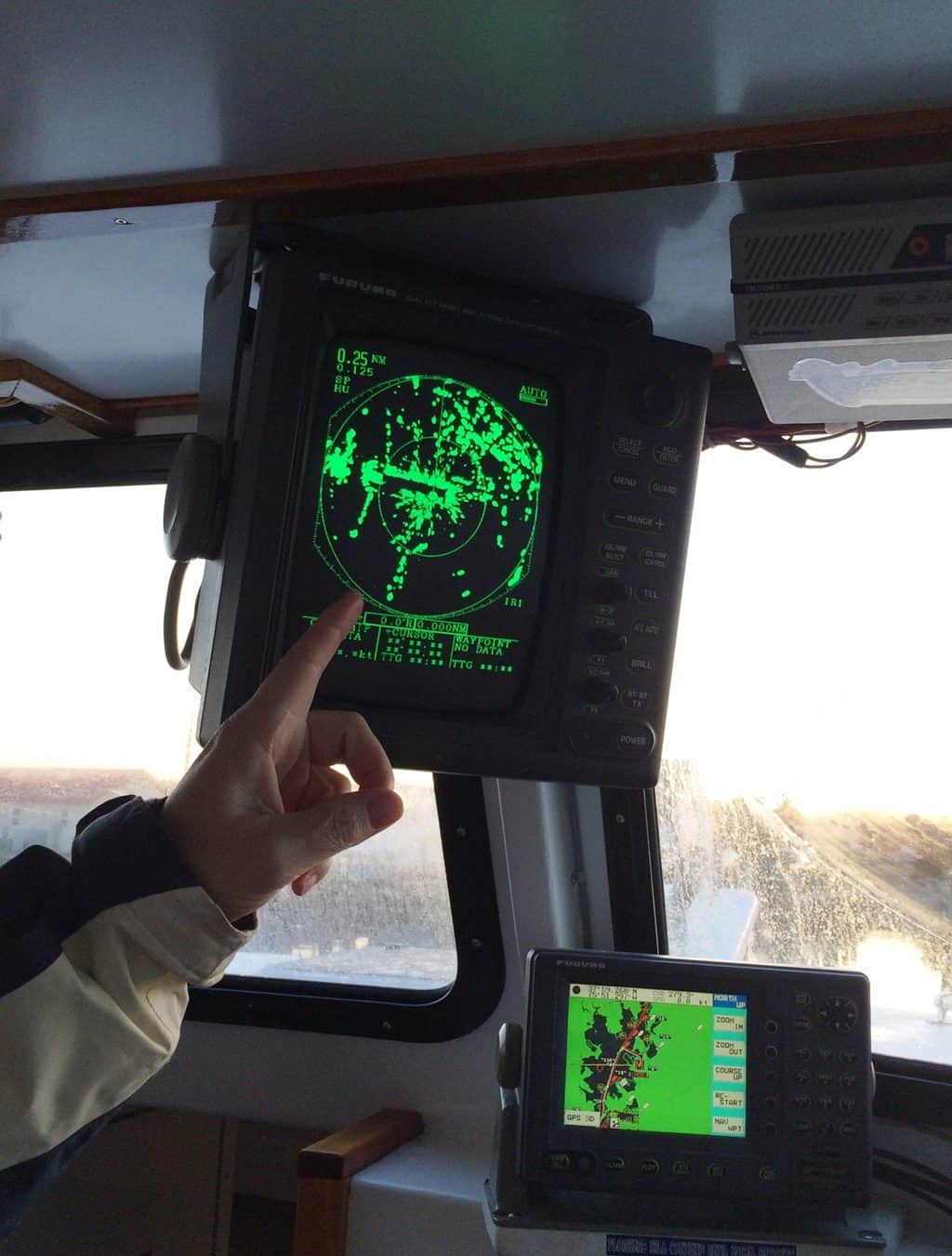Since 1918, the U.S. Navy has been using the lower Potomac River as a firing range to test its guns and munitions. In recent decades, it’s tried out new weapons over the water, like lasers and electromagnetic railguns.
Residents, boaters and watermen have learned to live with the intermittent blasts from the Naval Surface Warfare Center, Dahlgren Division, in King George County, Va. and the open water testing, when a stretch of river south of the U.S. 301 bridge is closed to river traffic.
But a bureaucratic notice was posted in the Federal Register in December seeking public comment on a proposed expansion of the middle “danger zone” that extends about 20 miles downriver from Dahlgren. The notice said the expansion was for “ongoing infrared sensor testing for detection of airborne chemical or biological agent simulants, directed energy testing, and for operating manned or unmanned watercraft.”
Boaters who spotted the notice reacted with dismay. They complained that the proposed danger zone expansion would force vessels trying to get up or down river into such shallow water along the Maryland shore that they would risk running aground.
“I have been boating on the Eastern seaboard for over 40 years,” wrote James Khoury, vice commodore of the Prince William Yacht Club. “I have never come across a mandate that deliberately puts the safety of boaters in both the recreational and commercial boating industry in jeopardy.”
The notice also stirred concerns among oyster farmers and watermen, especially after Potomac Riverkeeper Dean Naujoks began raising questions about how the Navy’s gunnery exercises and chemical/biological tests may affect fish and shellfish.
In late January, the Potomac Riverkeeper Network and Natural Resources Defense Council sent the secretary of the Navy two letters accusing the service of violating federal environmental laws and threatening to sue.
Drawing on information in a 2013 environmental impact statement, the groups said the Navy annually fires about 4,700 large-caliber projectiles from Dahlgren and sets off more than 200 explosions in the river. It also releases substances over the water 70 times a year on average to simulate chemical or biological attacks, they said. Among the listed substances was a gasoline additive and a paint stripper.
They accused the Navy of failing to get a required discharge permit or a presidential exemption from the Clean Water Act for the projectiles and substances it puts in the water. They also said the service failed to consult with the National Marine Fisheries Service about whether its weapons and chemical testing harm critical habitat for endangered Atlantic sturgeon.
“We’re not trying to stop the activity. We’re just saying you should have permits and limits on what you’re putting in the river,” Naujoks said. “I think the Navy owes some type of explanation and [should] convey what this expanded bombing range means for the river and river users.”
A deputy assistant Navy secretary replied in writing to the groups that the U.S. Environmental Protection Agency and Virginia and Maryland regulators agreed in 2012 that testing at Dahlgren didn’t require a discharge permit or presidential authorization. Likewise, he said it got the fisheries’ service agreement that while its tests could have an impact on sturgeon, the fish were unlikely to be harmed.
Jennifer Erickson, a Dahlgren spokeswoman, said in an emailed response to written questions that 74 percent of the projectiles fired downriver are inert and that most of the live ordnance is fused to explode above the water. Rounds that don’t detonate bury themselves in the river bottom, she said.
Erickson also said that the “small quantities” of chemical simulants released “would undergo immediate dilution.” Previous assessments by the Navy concluded such tests produced “no observable environmental effects,” she said.
Despite the Navy’s assurances that spent shells are buried in the bottom, commercial fishermen say they’ve recovered them periodically in their nets and have seen projectiles detonate after hitting the water.
Elgin Nininger, 85-year-old fisherman and owner of a seafood store in Colonial Beach, Va., recalled that decades ago, he snagged “oodles” of projectiles and other debris. He brought some of the spent ordnance, which he described as small rockets with fins on the back, ashore or left them in the water, marked with a buoy, for the Navy to retrieve. But other times, he suspected what came up might be explosive, so he said that he’d very carefully return it to the water.
Oyster farmers, the Maryland and Virginia watermen’s associations, and the Potomac River Fisheries Commission have asked the U.S. Army Corps of Engineers to hold a hearing on the Navy’s request to expand the danger zone. The Corps, which must approve the expansion, has not acted on that. But in February, it reopened the public comment period on the danger zone and extended it to April 7.
“They’ve been doing some stuff that’s probably not best for the river,” said Robert T. Brown Sr., president of the Maryland Watermen’s Association. “They want to expand it … we want to know what’s going on. There are some oysters on the bottom there. What kind of ordnance are they going to be shooting?”
Riverkeeper Naujoks has organized a public forum March 29 to discuss potential impacts of the proposed weapons testing expansion in the Potomac on recreational boating, commercial fishing and shellfish harvests. The session is to be from 6 p.m. to 8 p.m. at the Potomac fisheries commission offices, 222 Taylor St in Colonial Beach.
“I think the Navy owes some type of explanation,” said Naujoks, “and [should] convey what this expanded bombing range means for the river and river users.”




